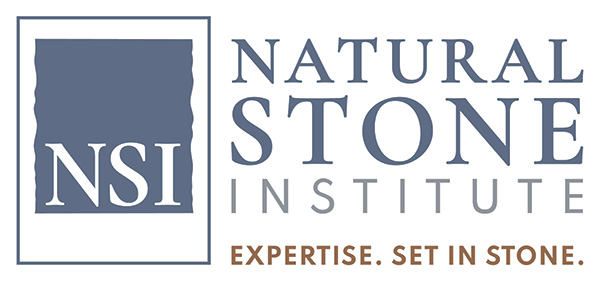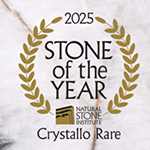A Study of the Cleanability of Marble and Granite Countertop Materials
O. Peter Snyder, Jr., Ph.D.
Hospitality Institute of Technology and Management
Saint Paul, MN
February 2006
Introduction
Prevention of cross-contamination of pathogens on kitchen counters is very important to protecting the health of the family. This study compared the cleanability of four countertop materials.
- Dakota Mahogany Granite is quarried near Milbank, South Dakota. Typical of granites, it is primarily made up of quartz, plagioclase feldspar, and orthoclase feldspar, with accessory minerals. Specific gravity of the material is 2.66. This sample was selected because of its usually severe size and frequency of the pits in the surface. The test specimen was not treated with any impregnator or sealer prior to the test. Surface finish of the test specimen was "polished," as defined by ASTM C 119.
- Uba Tuba Granite is quarried in Brazil. It has a specific gravity of 2.66. Some pitting of the face of the test specimen is normal due to the "plucking" of some of the mica minerals during fabrication processes. The test specimen was not treated with any impregnator or sealer. Surface finish of the test specimen was "polished," as defined by ASTM C 119.
- Carrara White Marble is quarried in the Carrara-Pietrasanta region of Italy. It is relatively pure and has exceptionally fine calcite crystals of ±0.10 mm in size. Specific gravity of the material is 2.69. The test specimen was not treated with any impregnator or sealer prior to the test. Surface finish of the test specimen was "polished," as defined by ASTM C 119.
- Snowdon White Engineered "Stone" by Cambria is man-made, the primary material being crushed quartz aggregate. Various sizes of quartz granules are mixed together with a polymer adhesive binder, producing a product with an estimated specific gravity of 2.40.
Methods
The test organism used for this study was E. coli ATTC #25922, a non-pathogenic laboratory E. coli used in testing. This culture was obtained from MicroBioLogics, St. Cloud, MN and grown on Trypic Soy Agar (BioPro). A swab of the surface was put into Tryptic Soy Broth (Difco). The broth was incubated at 35ºC for 24 hours. A loopful of culture was inoculated into 9 ml of M broth (BioPro) and incubated for 24 hours at 35ºC. To inoculate a surface, 1 ml was applied to a 9"-x-9" area of a countertop surface and was spread using a 4-inch glass spreading stick. The E. coli was allowed to dry for 15 minutes.
The washing and rinsing procedure was done using two 2-liter stainless steel bowls of room-temperature water with typical 12"-x-12" home-style dish cloths. In the first bowl, there were 5 ml of Dawn detergent (Procter & Gamble) and a dish cloth. The second bowl contained clean water only and a dish cloth. The procedure was to use the detergent dish cloth to rub the surface back and forth 10 times in one direction, rinse out the cloth in the detergent solution, and rub the surface back and forth 10 times in the opposite direction and rinse the cloth. To rinse the surface, the procedure was repeated with the clean water and the clean water dish cloth.
To recover the microorganisms after the cleaning and then, the rinsing procedure, Hydra-Sponges were used with sterile gloves and neutralizing buffer (International Bio Products, Redmond, WA). The surfaces were sponged after washing and again after rinsing, and each time the sponges were recovered with 30 seconds of massage in a stomacher. One ml of the recovery solution was plated on VRB+Mug (International Bio Products, Redmond, WA). The VRB+Mug incubated at 35ºC and read at 24 hours.
Finally, the tiles were sanitized using a 0.5% solution of household white vinegar (8 oz. 5% vinegar in 72 oz. water). The surface was allowed to air dry for 15 minutes. The surface was again sponged to measure surviving microorganisms. One ml of the recovery solution was plated on Violet Red Bile Agar with Mug (International BioProducts, Redmond, WA) to assure the best recovery of injured cells, incubated at 95ºF, and the surviving E. coli counted at 24 hours.
Results
The results of the cleaning study conducted are shown in Table 1 and Figure 1. All surfaces by wash and rinse criteria alone would easily meet the FDA surface sanitizer criteria of a 5-log reduction of pathogens on the surface. The results after the wash stage showed a reduction from 9.9 log10 to 6.73 log10 on the Dakota Mahogany Granite; 5.35 log10 on the Carrara White Marble; 4.91 log10 on the Uba Tuba Granite; and the greatest reduction, 3.89 log10, was on the Cambria Snowdon White. An analysis of variance, Table 2, shows that the differences were significant at the 0.02 level.
The results of reduction after rinse are shown in Table 1 and Figure 1. In this case, there was a reduction to 3.59 log10 on the Dakota Mahogany Granite; 2.96 log10 on the Carrara White Marble, 3.57 log10 on the Uba Tuba, and 1.75 log10 on the Cambria Snowdon White. The analysis of variance, Table 3, shows that there were no significant differences at the 0.05 level.
After sanitizing, all surfaces except that of the Uba Tuba were zero, or essentially zero. The Uba Tuba showed virtually no reduction with the vinegar sanitizer, which is very unusual. The same happened in all three trials; therefore, it is probably not an artifact. At this time, there is no apparent reason for this result.
Discussion
The purpose of this study was to evaluate the differences in cleanability of Dakota Mahogany Granite, Carrara White Marble, Uba Tuba, and Cambria Snowdon White. All surfaces easily met the general FDA criteria for sanitizing by having a greater than 5-log reduction of pathogens after wash and rinse, as performed in this study with a common home dish cloth and 2 liters of wash and rinse solution. Overall, there was no statistical difference in reduction after wash and rinse for any of the four surfaces. This indicates that the differences in surfaces as discussed in the introduction did not make a significant food safety difference in cleanability.
An unexpected result was the failure of the vinegar sanitizer to reduce bacteria in the sanitizing step of the Uba Tuba material. There is no identifiable reason for this, other than that something in the surface perhaps neutralized the weak acetic acid vinegar solution.
Conclusion
This study showed that typical stone countertop materials are very easily cleaned to meet FDA guidance for reducing pathogenic bacteria 5 10 food contact surfaces to a safe level.
Countertop Sanitation Study Compares Natural with Engineered Stone (February 2006).
For a countertop sanitation study comparing granite, stainless steel, concrete, tile, wood, and plastic laminate (1999), click here.









